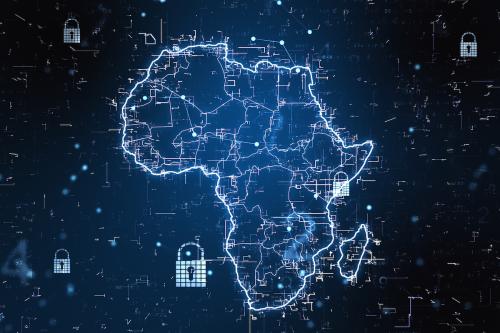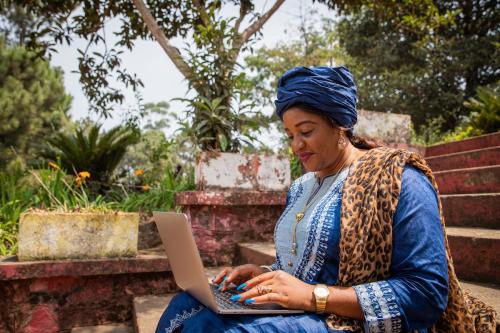First came M-Pesa, the now famous mobile phone money transfer system in Kenya, which has made it possible for millions to access the life-changing financial services previously not available to them.
Now there is Bangla-Pesa, a complementary currency that has become a medium of exchange in the Bangladesh slum in the city of Mombasa. Bangla-Pesa—appropriately named as it is only accepted within the confines of this particular slum— is a voucher that traders and service providers are using to do business. Unlike vouchers that are used for a particular good or service, Bangla-Pesa coupons are accepted for many transactions and therefore represent a complementary currency acting as a means of exchange in the slum. For this slum, Bangla-pesa operates alongside the official government issued currency.
One feature of slum economies is business volatility. Sometimes within a month, businesses are booming and demand for goods and services is high. This could, for example, coincide with times when workers receive their wages. However, good times are often followed by downturns within the same month, where economic activity quickly slows down. A survey conducted in the Bangladesh slum in Mombasa found that many residents were not able to get basic necessities during periods of business downturns.
Consider a bicycle operator who provides transportation services in the slum. He can make enough income for sustenance if he makes 20 trips a day. However, during the slow periods of the month, demand for his services might be only 10 trips a day. Thus, he won’t make enough money to buy groceries and put food on the table. In the same slum, there is a grocer facing similar problems of low sales, and she needs transportation services to get around the slum. Yet, both slum traders don’t do enough business during the slow periods and therefore have to go without certain goods and services during these times.
But now introduce Bangla-Pesa (BP), vouchers with designated values, into the slum. Businesses that are members of the Bangla Business Network enroll in the program, which distributes an equal number of vouchers to each member. In addition, all the members agree to honor the vouchers as means of exchange. Now when all or some of the traders experience downturns in their business, they can make business transactions among themselves with Bangla-Pesa. Given that the bicycle operator needs to purchase some groceries, he will give the grocer BPs (amount depending on quantity of groceries). The grocer accepts the BP vouchers and gives him the groceries he needs. When the grocer needs to get somewhere via bike, she can go to the bicycle operator (who is also a member of the Bangla Business Network) and take a ride using her BPs. The transactions do not have to take place simultaneously. This is not a barter trade system because the vouchers are used to make transactions for many goods and services among all members of the business network. As a result, the traders in this slum are able to engage in a whole range of transactions using Bangla-Pesa.
The Bangla-Pesa program aims at cushioning residents against falling below the poverty line during periods when business slow and poor. The program also aims at stimulating the local economy and assists its members in trading their excess capacity. The idea is that this will increase overall efficiency in the market. The program therefore seeks to create an avenue for the poor to enhance their participation in a market economy. It should provide a means for the poor to purchase goods and services from the market even without normal currency.
The Bangla-Pesa program seeks to cushion the poor whose flow of money is often limited and sporadic. It is only used within the membership network and serves as a mutual-credit clearing (or multilateral reciprocal exchange). It is described as credit since traders receive goods and services without paying any cash (they only present the coupons).
A survey of the impact of the Bangla-Pesa program reports impressive results. Around 83 percent of participants in the program reported that their total sales were increasing as a result of the vouchers with only 0.05 percent reporting a decline in sales. Average daily sales through Bangla-Pesa represent 22 percent of the total daily sales reported by businesses from the baseline level. However, daily sales reported through Kenyan shillings have not changed from the baseline level. This suggests that the 22 percent of daily trades conducted with Bangla-Pesa represents additional sales which might not have happened without the program. Overall, the use of the complementary currency appears to expand market exchanges in the slum.
It is often claimed that complementary currencies strengthen community spirit, increases community participation in social and economic activities, reduce imports into the community, and lead to improved quality of life. The evidence from the survey seems to suggest that this program is having a positive impact on participants.
A quick review shows that complementary currencies are a growing phenomenon in developing countries. It does appear that such complementary currencies help ease indentified constraints facing poor people. But questions about the broader implications of using a complementary currency such as Bangla-Pesa remain unanswered. For example, could such use of a localized currency weaken linkages with other communities and the larger economy? What might be the impact on the economy if many other slums in country or city adopt their own complementary currencies? Is this a program that should be restricted or regulated? Is it a case of “bad money” driving “good money” out? These are questions that researchers should explore before complementary currency programs explode in Kenya and other developing countries.



Commentary
Bangla-Pesa: Slum Currency and Implications for the Poor in Developing Countries
July 17, 2013